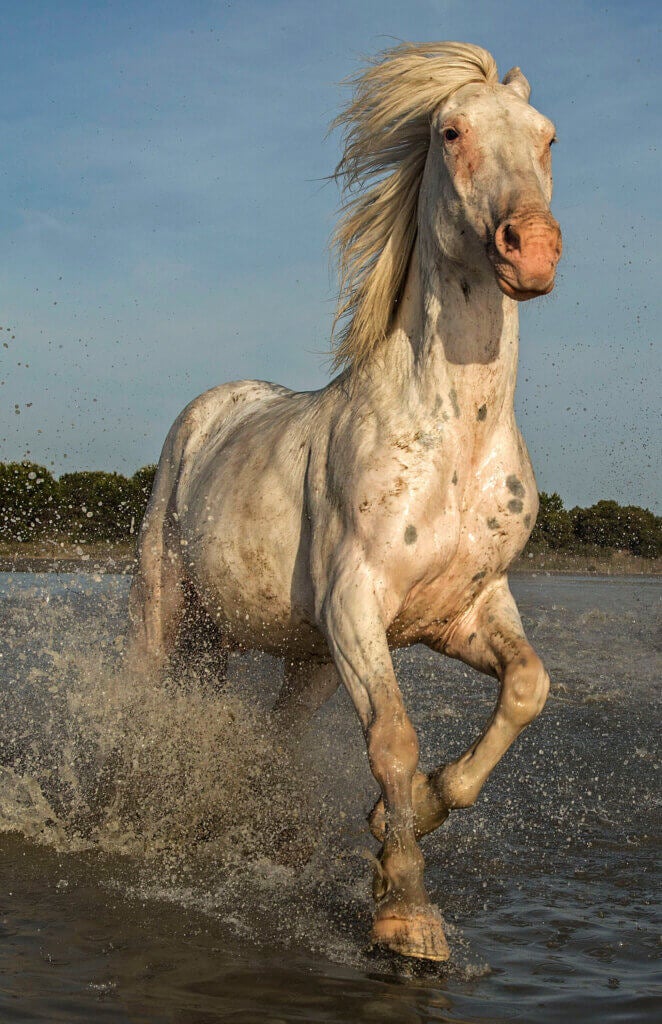 >
>
Congratulations – You’ve done it! You have combed through all your recent images, found the best ones as well as a few favorites, and your network has approved the work. Now it is time to actually design that portfolio! One of the biggest questions we receive is online vs. physical. The answer: Both.
We find the creative process continuing as we figure out the best way to arrange all the images. Back in the “old days,” this meant creating a physical portfolio to bring with you from interview to interview. However, in today’s world, it is also beneficial to have an online presence as well.
“If you are showing your work to someone via email to potentially get hired to shoot pictures that will be displayed [online], a website is perfectly fine for that,” explains Leo Mascaro. “But let’s say that you’re trying to pitch your work to be featured in a printed magazine, or to be hanging on a wall at a gallery, cafe, or to be sold as prints. In that case, I think having physical copies of your photographs to be shown in person not only makes more sense but will have a much higher impact on whoever is looking at them.”

Now in the digital world, having an online portfolio is an absolute necessity for modern artists. “I honestly don’t even have a physical portfolio, because more than likely I’m always reaching out to brands via the internet…also, I get paranoid when people touch my physical work, [due to] fingerprints…creasing, etc.” Nicole Zelkowitz says. With so much of our correspondence happening via email, social media, and instant messaging, it pays off to have a link that you can quickly send.
Additionally, many find having an online portfolio to be freeing. “The online portfolio allows you to offer a bit more. You don’t need to drill down as much,” states Mark Doyle.
Zelkowitz adds, “Sometimes if you are to approach a bigger person about your work, they may not even have enough time to go through your physical portfolio and would rather see your work online.”

This does not mean that putting an online portfolio together is easier. There is still a lot of thought that goes into making sure that when people visit your online portfolio that the images are laid out neatly and easy to view. “Remember that today the world is mobile. Your portfolio will be viewed, maybe for the first time, on a smartphone. Choose images that will also look good when viewed small.” Rick Sammon advises.
“I love a clean look on my website,” Zelowitz adds. “I have my portfolio sections of my website set up in an even grid…The actual photos are all set up within the same measurements, so some of the photos…will be cropped more, but I just center it around the most important details.”
While having an online presence is essential for an artist; there is an attractiveness to having a physical portfolio. Mascaro advises, “Although we’ve been spending more and more time in the digital world these days, I believe that physical portfolios still have their place.”
“I do believe, however, physical portfolios are very useful for people who try to get their work shown in galleries, or selling artwork at shows and such,” Nicole Zelkowitz adds. It is astounding how much different an image can look when printed! Seeing your work physically in hand rather than on a screen can bring an image to life in ways that may not be expected.
Having a physical portfolio can be a game-changer if you are going to an in-person interview. The moment you hand the interviewer a packet consisting of your resume, cover letter, and portfolio, it leaves a lasting impression. Especially if you made a copy just for them, such as a softcover book.

“For instance, just this week I went to an interview and handed the person my print portfolio and he said ‘Wow! This is nice!’ He went to hand it back to me, but I said, ‘No, you keep it!’” Mark Doyle exclaims.
There is a lot of flexibility with physical portfolios that may not be possible with the online portfolio. An online portfolio is great to showcase your work. However, a physical portfolio is a chance to tell your story. You do not get to choose how quickly someone will scroll through your work on a screen. You do get to choose how to layout your images in a spread and show your creative skills in a different light.
“Keep in mind that a physical portfolio doesn’t necessarily mean that big old portfolio case that people used to carry around,” Leo Mascaro says. “Nowadays you can carry individual prints with you, postcards, or photo books. You can even have some of your images printed on the back of your business cards. Don’t be afraid to get creative!”

We at Printique are big fans of the physical portfolio. As Mascaro says, there are many different options to present your work in print. Our photo books are a perfect way to leave a lasting impression on an employer or client. There are multiple portfolio-friendly templates in the book builder, or you can create it from scratch. We also offer different paper options such as Luster or Glossy to best highlight your images.
Do you have any tips or tricks that you would like to share about portfolio making? We want to hear them! Please feel free to reach out to any of our social media platforms: Facebook, Twitter, and Instagram.
Investing In Your Business: Updating Your Marketing Materials
How To Use Wall Displays To Sell More
2021 Virtual Education Resources for Pro Photographers